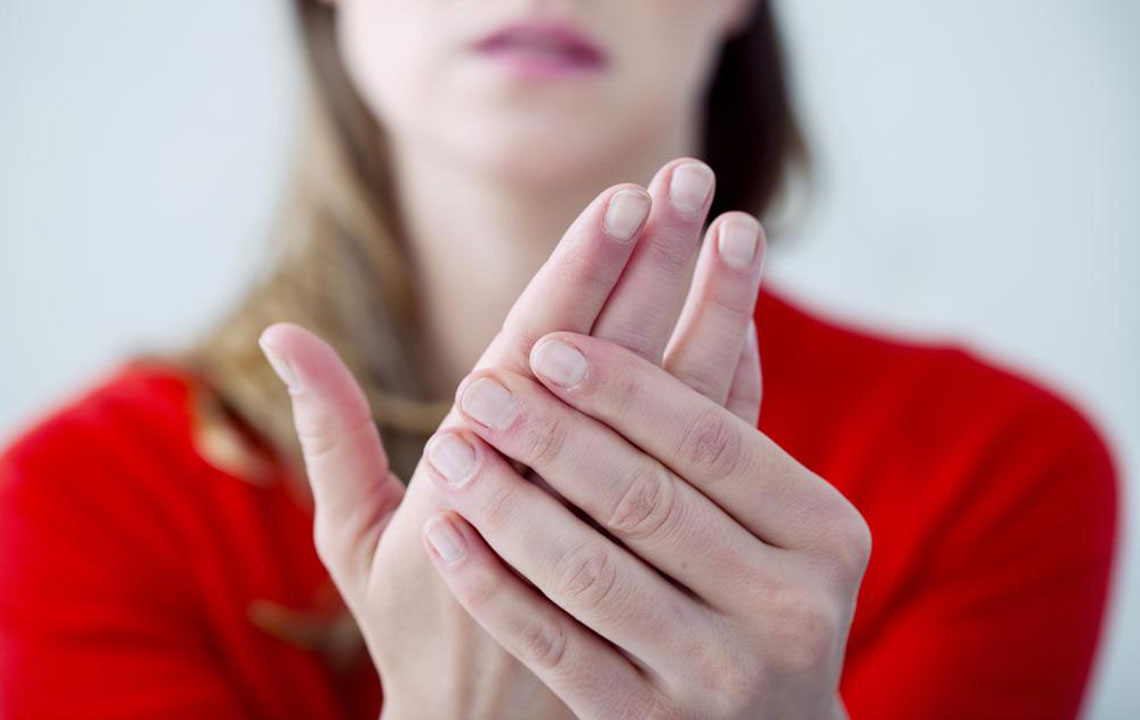Common Causes and Symptoms of Arthritis Pain

Arthritis is a painful condition that causes inflammation of the joints. The term arthritis covers a broad spectrum of rheumatic diseases and conditions, that affect the joints. There are over 200 types of arthritis, classified into seven main groups.
The main groups under which the various types of arthritis are classified are:
- Mechanical or degenerative arthritis
- Inflammatory arthritis
- Soft tissue musculoskeletal pain
- Back pain
- Infectious arthritis
- Connective tissue arthritis
- Metabolic arthritis
Causes of arthritis
While it is not possible to pinpoint any single cause, a combination of any of the following can lead to arthritis.
- Family history can lead to osteoarthritis
- Immune dysfunction can lead to Rheumatoid Arthritis and Lupus
- Abnormal metabolism can lead to gout and pseudogout
- Any injury to the musculoskeletal system can lead to degenerative arthritis
- Any infections can lead to arthritis as in Lyme’s disease
Arthritis pain symptoms
There are symptoms that precede, before a completely developed arthritis. Arthritis is a progressive condition, and the severity of symptoms increase over a period of time. In some cases, the pain is persistent, while in others, the pain is on and off. Also, the symptoms vary depending on the type of arthritis.
There are certain arthritis pain symptoms that are experienced by a majority of patients. There are four key warning signs of arthritis.
- Joint pain
The earliest symptom of arthritis is joint pain. Arthritis can affect the joints in the neck, shoulders, elbows, knees, wrist, hips and ankles. The pain can be continuous or intermittent. It can be isolated to one place or the pain can be felt in all parts of the body. - Joint stiffness
Some types of arthritis display a typical symptom—joint stiffness. Joints get stiff after waking up in the morning, after sitting for a long time at the work desk, or in the car. While in most cases, the joints loosen up after some time, few suffer from persistent stiffness. - Swelling
Swelling is present in some types of arthritis. The skin that covers the affected joint becomes red and tender and is warm to touch. - Difficulty in moving the joint
If you’re unable to move a joint or find it really difficult getting up from a chair, it could spell arthritis. If you experience the above arthritis pain symptoms, it’s best to consult a doctor so that treatment can be started right away, and halt the progress of developing full-blown arthritis.
The above are the general symptoms that manifest in most forms of arthritis. Different types of arthritis cause different types of pain. Explained below are the painful symptoms of the common types of arthritis.
- Osteoarthritis
When a person is suffering from osteoarthritis, the protective cartilage encasing the joint breaks down. As a result, the joint movement gets very painful. Over a period of time, as the cartilage completely breaks, the bones rub against each other, causing excruciating pain. Lack of synovial fluid, ligament damage can also contribute to the pain. - Rheumatoid arthritis
An overactive immune system is what causes rheumatoid arthritis. The healthy tissues are damaged by the body’s own defense mechanism. The joint lining, the synovial tissue is attacked by the immune system. The continuous inflammation causes breakdown the joint, and causes permanent damage. The result is severe pain. The pain is not restricted to the joint alone, the bone, and ligaments can also cause pain. - Psoriatic arthritis
Inflammation and pain are caused due to the immune system attacking the body. Psoriatic arthritis affects the joints, connective tissue, and the joints. When it affects the connective tissue, it leads to enthesitis. On the skin, it leads to psoriasis. - Gout
Uric acid has to be excreted by the body. When excretion doesn’t take place, the acid builds up in the body, crystallizes in the joints, and that leads to excruciating pain and inflammation. Gout usually affects the large joint in the big toe. The other joints too are equally susceptible. Unlike other forms of arthritis, the pain in gout is intermittent. You can have bouts of severe pain followed by total remission. - Fibromyalgia
A central pain syndrome, Fibromyalgia is characterized by widespread pain. The pain is not restricted to a single joint. The pain occurs at intervals or is constant. Other symptoms of arthritis pain include fatigue, mood troubles, sleep problems, and lack of concentration. - Lupus
An autoimmune inflammatory disease, lupus affects many parts of the body. The affected parts include the joints, kidneys, brain, blood, skin and other organs. Fatigue, joint pain, hair loss, sensitivity to light, rash, fever and kidney problems, are other symptoms of arthritis pain.
Pain is the biggest concern in arthritic patients. Pain and inflammation can be effectively managed through medication and physical therapy. Regular exercise and a balanced diet can help to reduce the intensity of arthritis pain symptoms, as well as preventing further damage to the joints.


